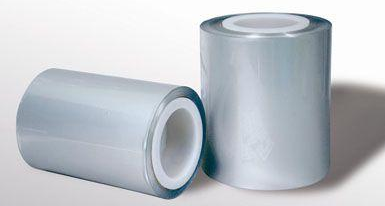Source: Link Testing Instruments Co., Ltd
Blister package is one type of pre-formed plastic packaging, which is featured with high barrier property and useful for protecting the products from external contaminations. Today blister package is widely used for protecting products against external factors, such as humidity and contamination for extended periods of time. Blister package usually has a backing of paperboard or a lidding seal of aluminum foil or plastic.
In medical industry, blister packs are commonly used as unit-dose packaging for pharmaceutical tablets, capsules or lozenges. The medicines are held in the blister cavities, which are independent from each other so even though one blister cavity is broken, others can keep intact. The heat seal strength of the paperboard or aluminum foil should be adequate. Otherwise when one tablet or capsule is removed from the blister package, the other blister cavities may break and as a result, the medicine may become deteriorated because of entering of air or moisture. Or even worse, the medicines may fall out of the blister cavities. Therefore it is necessary to test the heat seal strength of the medical blister package to guarantee the quality of medicines contained inside.

Figure 1. Rigid Sheet of Blister Pack
Hereinafter we take blister package made of rigid PE sheet and aluminum foil as test specimen to elaborate on how to test the heat seal strength of blister package. We use Link Testing LTS-05 Auto Tensile Tester as testing instrument.
Figure 2.LTH-H3 Heat Seal Tester
Figure 3. LTS-05 Auto Tensile Tester
The heat seal strength tests can be performed according to the following procedures.
(1) Cut 2 pieces of specimens along the machine direction of PE/Aluminum rigid sheet. The size of the specimen should be 90mm×100mm.
(2) Switch on HST-H3 Heat Seal Tester, set sealing temperature (155℃), sealing pressure (0.2MPa) and dwell time (1.0 second).
(3) When the preset sealing temperature is reached, make the PE layer of the two specimens contact with each other. Place the specimen into between the upper and lower sealing jaws. The sealing jaws should be paralleled to the width direction of the specimen.
(4) Step on the pedal switch. The sealing jaws will be closed and start heat sealing process. When the preset dwell time is reached, the sealing jaws will separate automatically.
(5) Cut 2 pieces of specimens along the transverse direction of PE/Aluminum rigid sheet. The size of the specimen should be 90mm×100mm. Then repeat step 3 and step 4.
(6) Cut 5 pieces of specimens along the direction which is perpendicular to the sealing area from the machine direction and transverse direction of the sample material, respectively.
(7) Switch on the auto tensile tester. Set space between the sample grips (50mm) and test speed (300mm/min), specimen thickness and other test parameters.
(8) With the sealing area as the center, unfold the specimen to 180°. Clamp the two free ends of the specimen in the upper and lower sample grips. The longitudinal axis of the specimen should coincide with the central line of upper and lower sample grips.
(9) Click Test to start the test. The force curve will be displayed automatically in testing process and the final test result will be displayed automatically after test.
(10) Repeat step 8 and step 9 until all specimen tests are finished.
According to the test results given by the instrument, the manufacturer can determine whether the blister package can meet their requirements for packing of medicines.
For more details about LTS-05 Auto Tensile Tester and LTH-03 Heat Seal Tester, please visit www.linktesting.org
About Link Testing Instruments Co., Ltd:
Link Testing Instruments Co., Ltd is one leading supplier of packaging testing instruments, which is headquartered in Jinan, China